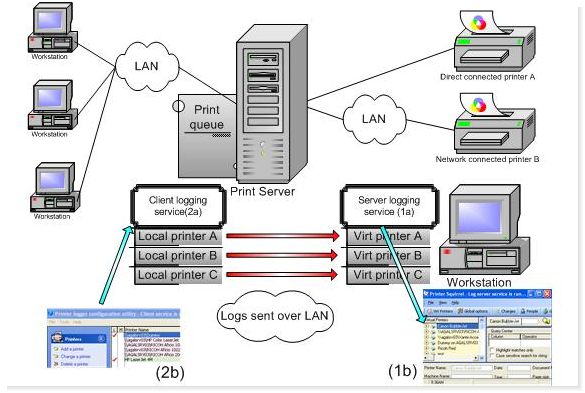| < Previous page | Next page > |
Logging overview

How the print logger works:
The logger packages (Printer Sprite or Printer Squirrel) consist of two components.
1a. The logger server service - This handles all the incoming logs from the logger clients and assigns them to the appropriate virtual printer and (1b) the server application itself (Printer Sprite or Printer Squirrel).
2a. The logger client service - This does the actual printer logging, then sends the logs to the logger server, and (2b) a client configuration utility.
The relationship between the logging servers and clients is similar to setting up a file share (virtual printer) on a server, then connecting to it with a client machine (logging client). In other words the logging client sends it's logs to a shared virtual printer (logs container).
The example in the diagram above is typical of most print logging configurations.
The logging server package should be installed on a machine that will not be turned off (although it can be logged off), and is in a convenient place to monitor logs.
The logging client should be installed on the print server that the printers are connected to, either physically or via a direct network connection.
When a workstation sends a print job to the print server, the logging client records the job - then sends the details of the job across the network to the logging server where it is stored in a database.
Important note: Make sure that ports 2376 and 2377 are open if you have a firewall on the logging client or logging server prior to installation. These ports must be unblocked for proper sending and receiving of logs. On the windows firewall these are blocked by default.